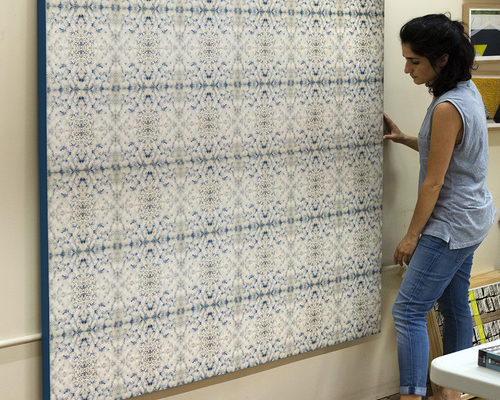
Rhea Karam is a Lebanese artist and photographer; she recently moderated ArteEast’s discussion panel “The City Speaks” with ArteEast-sponsored artists Dalia Baassiri, Lara Tabet, and Bassem Yousri. Rhea’s documenting skills, along with her fascination with imagery and text, gives her art work a particular ability to capture a city’s history and urban identity. In the interview below, Rhea shares with us her diverse background, travel experiences and artistic influences that shape her artistic identity.
Also make sure to also tune in on ArteEast Facebook page Friday, September 9th for a live discussion with Rhea and an exclusive look at her current work and studio in Manhattan, NY.
Enjoy!
AE: How did you come to develop the particular interest in urban environment and the role they play in every day life?
Rhea: I have always been fascinated by daily imagery and text that is placed on public streets to convey messages to a wider public. Wether it be street art, publicity banners, political propaganda etc. It is the first observation I seek out when visiting a new country as it is so telling of the socio-political context. When I started Breathing Walls in Lebanon in 2006, it was the first time I started to archive this imagery feeling it was an important historic element to keep a record of. This fascination has developed and evolved, I continue to document walls, but participate in the dialogue by leaving messages and pasting on walls myself.
AE: You were born in Beirut, lived between western cities, yet completely different when it comes to urban culture, How did each experience in both regions transpire into your work? Was it ever a challenge to mix your influences and display them your into your work?
Rhea: The contrast is part of what sparked my interest as I noticed such a distinct change in the urban landscape. In Lebanon and Egypt for example the messages on the streets were much more loaded with political content in comparison to the walls in New York where it was more about the textures, commercial posters, street art… I found it challenging to capture walls in New York, where I live. For the longest time I could not take a photograph when I was back home, the walls felt empty in comparison. With time and observation however I managed to begin to connect and approach them differently, and began recording them in a more abstract and formal manner stepping out of the documentary approach.
AE: As an Arab artist in the western world, do you see your artistic approaches circulating in a global context?
Rhea: Being an Arab American artist certainly influences my work but does not define it. I think photography, and all visual language is universal. There are no boundaries or restrictions.
AE: On your website, you mention that “The enriching dialogue created around and upon walls allows her to explore various themes such as the aftermath of socio-political change on the urban landscape, history, displacement, identity, communication, censorship, architecture and the environment.” Can you expand on that when thinking about your projects?
Rhea: A public wall is a like a blank canvas, a soap box. It addresses so many elements related to space, boundaries, identity, communication… It will always be a main inspiration to my work as it endlessly evolves and is genuine witness of present times. There is something very pure about finding an inscription of a poem, a word, or a personal opinion on a wall. (to be continued ) 🙂
Artist Statement By definition, walls are barriers. They can also act as windows to the conflicts engulfing their surroundings. In times of strife, walls offer a means of communication and self-expression for members of many social and religious communities. They have proven themselves an effective tool in establishing dialogue between suppressed voices and opinions by offering a canvas or soapbox. They are storytellers—absorbing and reflecting their surroundings—and becoming silent witnesses to our lives and battles. “Breathing Walls” is a project I originally started photographing in Lebanon, my country of origin. I felt the necessity to document these ephemeral testimonies of life as a record of an important period in time. With the rising of the Arab Spring, I decided to broaden my project. I thus began documenting other countries in the region where the walls are a crucial tool of communication and a reflection of socio-political status.
Artist Bio Rhea Karam was born in Beirut and grew up between the U.S. and France. She is based in NY where she graduated from the International Center of Photography in 2007 and was the recipient of a director’s scholarship. Her work focuses on documenting domestic and urban environments with an emphasis on public walls and the role they play in our daily lives. In 2009 she published Breathing Walls, a visual archive of the political transition in Lebanon. She has exhibited internationally in both solo and group shows and was named as one of 10 emerging Middle Eastern artists to watch by CNN.
Her Book Breathing Walls, illustrating her brilliant work is available for purchase. Interested parties, email info@arteeast.org